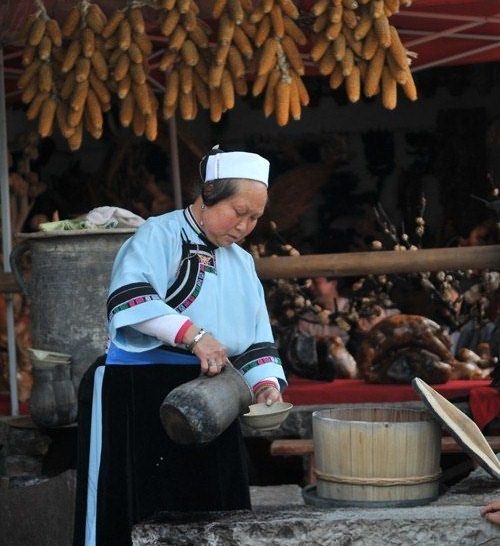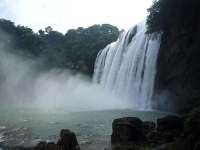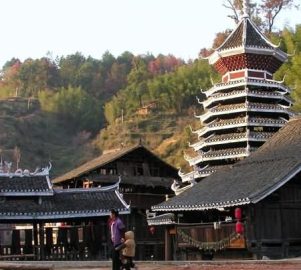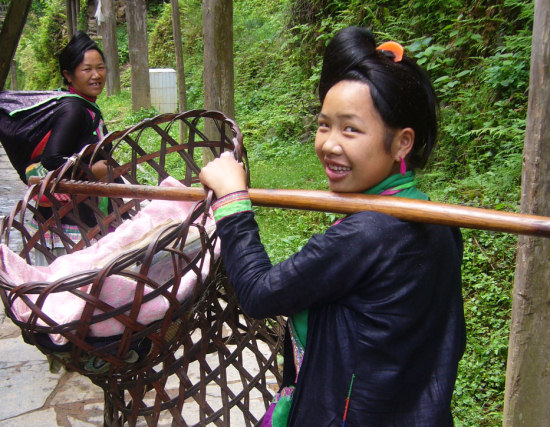Tunpu Village

On the way from Huangguoshu Waterfall back to Guiyang, highly recommend you to visit Tianlong Tupu village.
Tianlong Tunpu is 72 kilometers west of Guiyang, is the best-preserved Tunpu in Guizhou.
Since the Yuan dynasty (1271-1368), it had been used as an important military fortress, guarding a major gateway to the southwestern Chinese province of Yunnan. So the first emperor of Ming dynasty stationed troops for both defense and land reclamation.
Today, over 5000 people in 1,250 households, continue to live in Tianlong Tunpu. Being the descendents of the imperial Ming Dynasty garrison troops.
What does Tunpu means?
Tunpu people have maintained their traditional customs and way of life from the Ming Dynasty, in a kind of "lost world" environment.
The military elements in the design of Tunpu are readily apparent. At the time, stone was the toughest material readily available.
With high walls and narrow lanes, the village is a labyrinth for any first-time visitor, offering residents a distinct advantage in any in-village fighting. Tunpu people build their houses not only for living but also for defense. The houses are made of solid stones, with black tile roof s and white walls - the typical southern housing style. Shooting holes are found at all sides of the buildings, and sentry towers are scattered in the villages.
What can we see in Tunpu
Entering the lanes of the village, you will see barracks. The mountains around the tunpu are almost an archive of historical buildings. Ancient ramparts and the castle-style Wulong Temple are all national cultural relics. A Ming-era factory where soldiers produced weapons is in the rear of the mountain. Beacon towers, battlements and sentry posts dot the landscape.
Dixi is an ancient opera in Tunpu, there is an old theatre where you can watch 30 minute show. All actors are local people. There are anywhere from 40-50 to more than 100 masks in an opera. The audiences stand on high spots nearby to get a better view of the performance. Battles are a popular theme in the opera. ....more details of Dixi Opera
The history of Tunpu
The ancient castle villages were built during 14 century for military use. A mysterious tribe known as "Tunpu People" has survived here for hundreds of years, who live in a real kingdom of stone--the cobbled roads, stone houses, stone tiles, stone gates, stone city walls and stone watchtowers…
The ancestors of the "Tunpu People" were troops of the Ming Dynasty from the middle and lower reaches of the Changjiang (Yangtze) River who were sent to Anshun some 600 years ago. Over the centuries, the garrison forces turned the neighbourhood into farmland, grew crops, and constructed villages of stone houses for their own needs and use.
Tunpu people continue to lead a life almost the same as their ancestors 600 years ago. As you come closer, you may easily mistaken the dwellers for ethnic minorities, as they wear traditional costumes, usually long robes of blue with loose sleeves, and cuffs embroidered with laces for the womenfolk, and have special hairstyles. In fact, they are an ancient clan of Han Chinese, the ethnic majority of China today. Secluded from the outside world, Tunpu people have strictly maintained their customs and proudly preserved the traditions of the Ming era.
Many of women in Tunpu make cothes themselves by weaving cloth and sewing. They are also good at making embroidered shoes, which is their own way to beautify their feet. The sole is made of cloth; the vamp is slightly up-urved; and the upper is embroidered with colorful patterns of flowers, fishes, birds, and insects. Two long white ribbons along the upper brims make a puttee around the leg from ankle to leg. You may pick some as unique souvenirs back home.
Must-see Villages in Guizhou and Guangxi
Basha Zhaoxing Tang'An Xijiang Sanjiang Longsheng
Frequently asked questions in Guizhou





